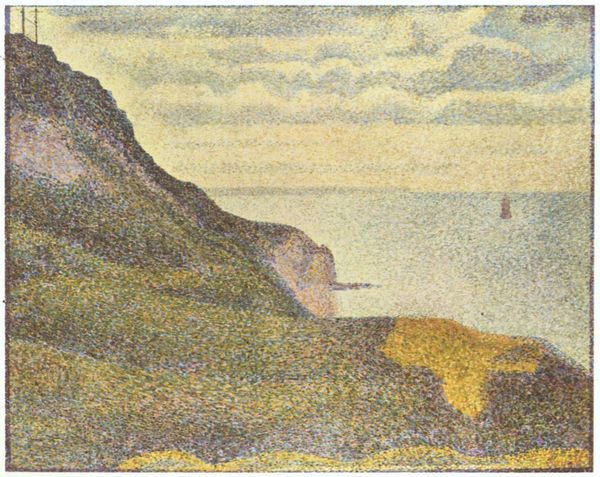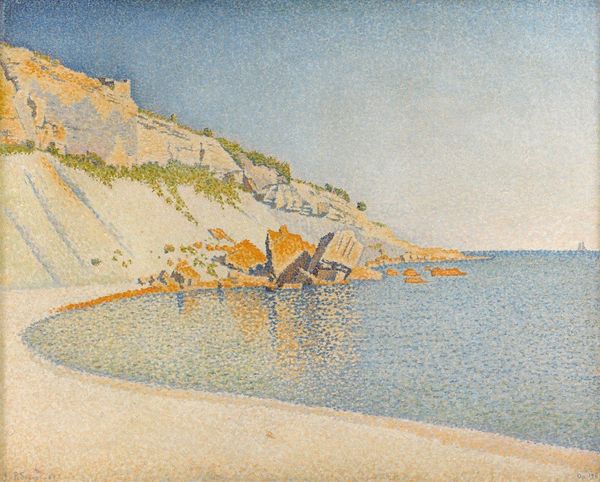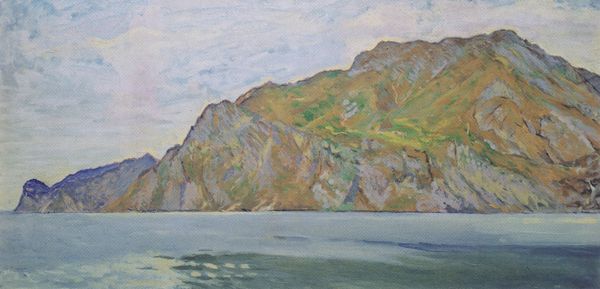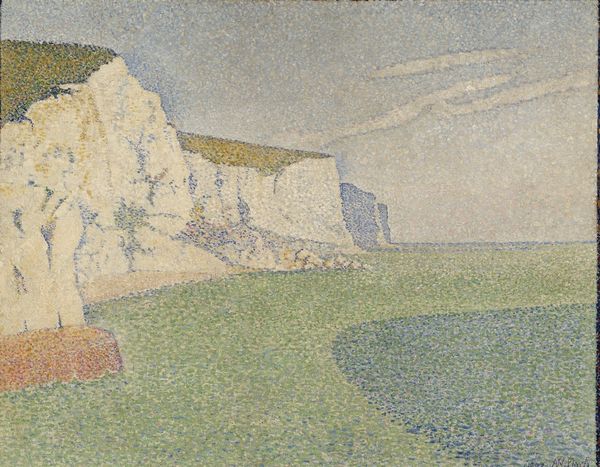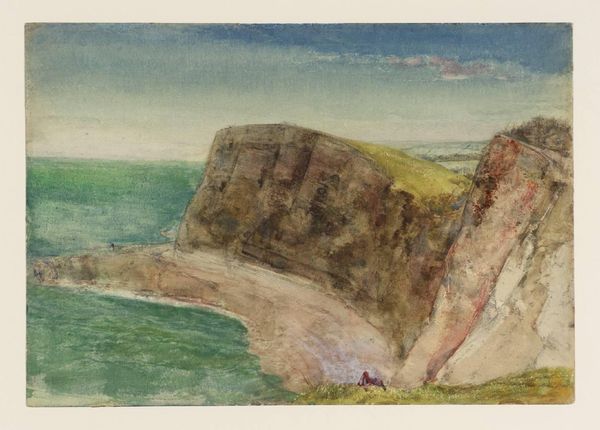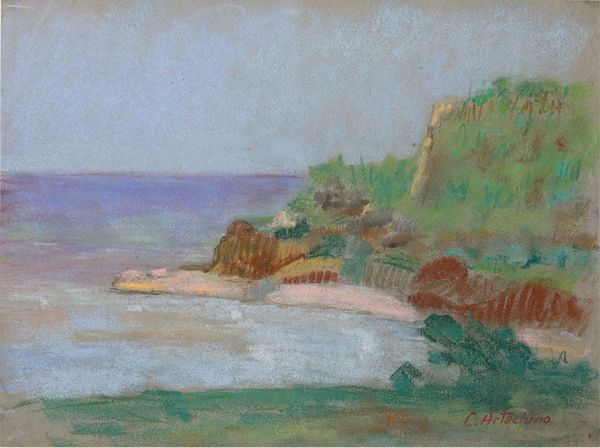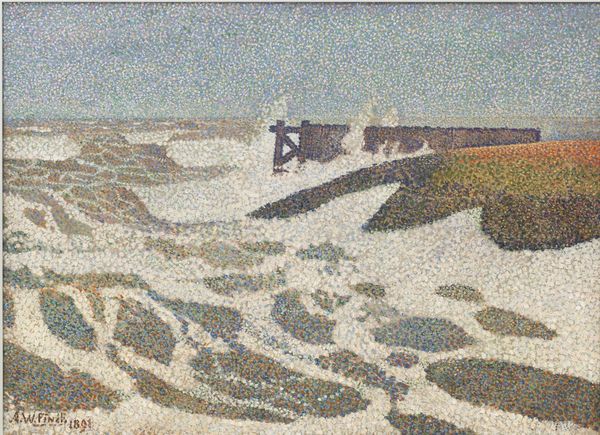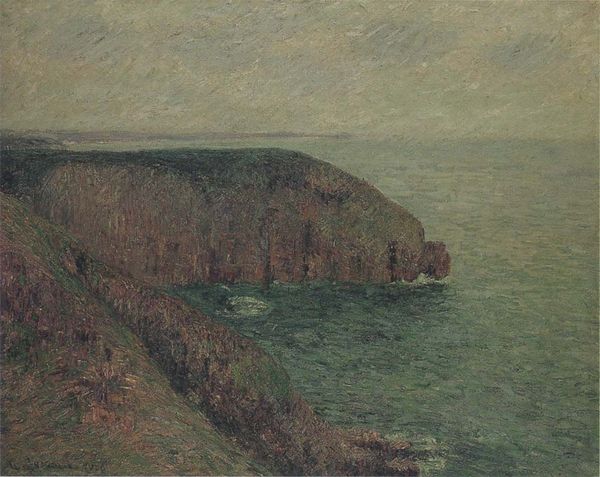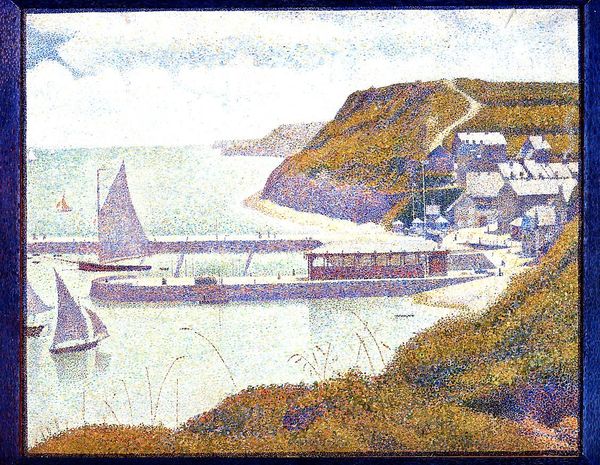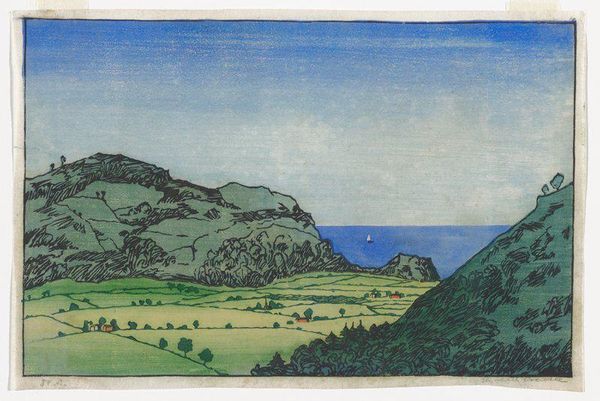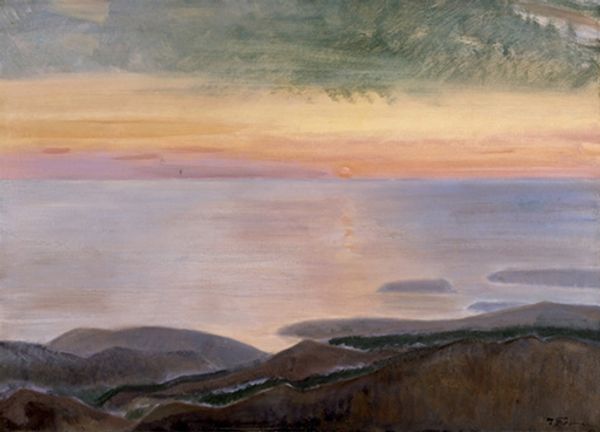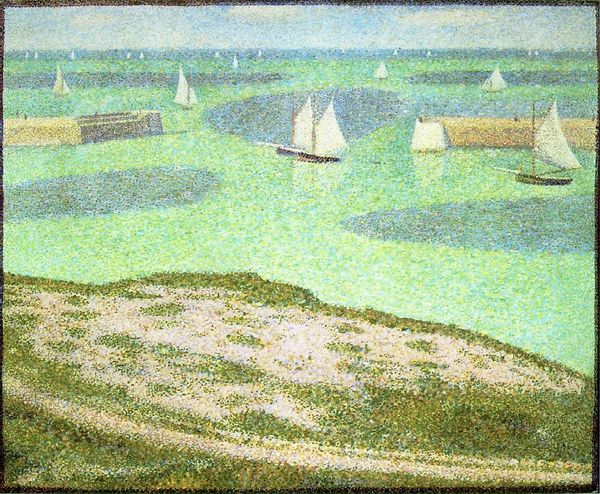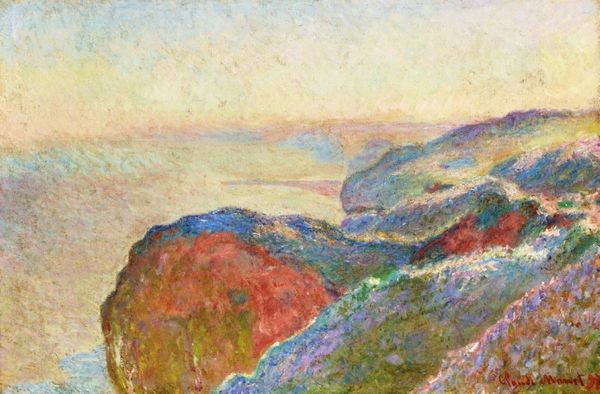
painting, oil-paint
#
painting
#
impressionism
#
oil-paint
#
landscape
#
impressionist landscape
#
oil painting
#
geometric
#
cityscape
#
post-impressionism
#
watercolor
#
sea
Copyright: Public Domain: Artvee
Curator: Take a moment to observe Georges Seurat’s "Seascape at Port-en-Bessin, Normandy," painted in 1888 using oil on canvas. What strikes you? Editor: Well, it has this shimmering stillness. The pointillist technique almost vibrates, but the muted tones create a very peaceful, even melancholy, mood. Curator: Exactly! Seurat’s methodical approach, his application of countless tiny dots, transformed the raw coastal landscape into a meticulously crafted object. Consider the labor involved—the repetitive gesture of each individual mark. This reflects the changing nature of artistic production itself during industrialization. Editor: That makes me think about the accessibility, or lack thereof, when creating art. Pointillism feels very upper-middle-class and academic, even if its subject is supposed to depict an outdoor seaside. This image feels depoliticized, perhaps even sterilized. Where are the fishermen, the working people of this port? Why this angle, with no direct reference to the socio-economic implications of a seascape? Curator: But look closer—it’s not simply a pretty scene. There’s a very conscious compositional structure here: the division between the solid mass of the cliffside, the flat plane of the sea, and the diffuse sky, constructed dot by painstaking dot. And there's a striking tension in the contrast between the geometric precision and the subject matter of an impressionist landscape. This wasn’t art as effortless expression, it's hard labor to depict labor-less visuals! Editor: Yes, you're right to notice that paradox. We have this representation of a calm seaside meant for vacationers done in a painstaking and highly specialized, almost artisanal technique that mirrors the mechanization happening at the time! So this image becomes a sort of emblem for the bourgeoisie who can consume both manual labor and nature without thinking of it as work. Curator: A great insight. And isn’t it fascinating how he makes nature into a series of repeatable actions, very machine-like and methodical in its making. Thank you. Editor: It was an eye-opening image, forcing one to ponder labor's invisibility.
Comments
No comments
Be the first to comment and join the conversation on the ultimate creative platform.
